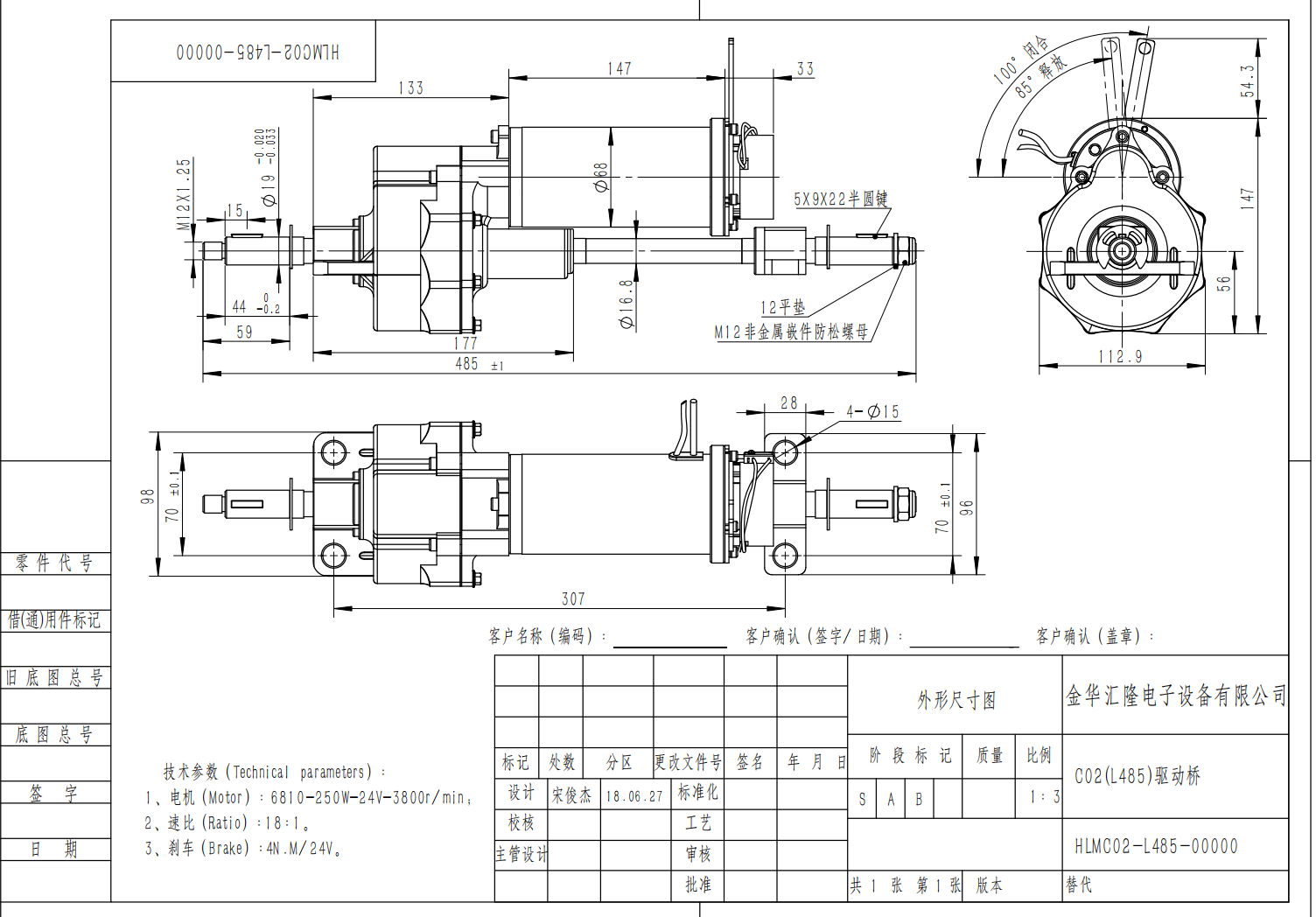C02-6810-250W Electric Transaxle For Agriculture & Farming
Key Advantages
Enhanced Power Output: With a 250W motor, the C02-6810-250W transaxle provides a substantial power boost for agricultural machinery, ensuring that tasks are completed with ease and speed.
Reliable Torque Delivery: The 18:1 speed reduction ratio allows for significant torque multiplication, which is essential for heavy-duty farming tasks such as tilling, planting, and harvesting.
Efficient Operation: The 24V-2500r/min motor ensures that the transaxle operates efficiently, reducing energy consumption and increasing the time between charges or refuels.
Safety and Control: The 4N.M new/24V braking system offers reliable stopping power, ensuring the safety of both the equipment and the operators in the field.
Core Applications
The C02-6810-250W Electric Transaxle is tailored for a variety of agricultural applications:
Tillage Equipment: Provides the necessary torque for tilling and soil preparation, ensuring a smooth and even seedbed.
Tractor Drives: Offers a reliable and efficient drive system for tractors, reducing maintenance and increasing uptime.
Irrigation Systems: Powers the movement of irrigation systems, ensuring even distribution of water across fields.
Harvesting Machinery: Delivers the power needed for efficient harvesting, reducing labor costs and increasing yield.
How does the transaxle improve efficiency in agricultural machinery?
Transaxles play a crucial role in improving the efficiency of agricultural machinery in several ways:
Enhanced Power Transmission Efficiency: Transaxles, like the C02-6810-250W, are designed to transmit power from the engine to the wheels with minimal loss. This efficiency is crucial for agricultural machinery, which often operates under heavy loads and in diverse terrains. The high efficiency of the transmission system allows for enhanced vehicle autonomy with higher load capacity and longer battery life expectancy on a single charge, as mentioned in the project overview of a high-speed and high-torque electric transaxle
Customized Drivetrain Solutions: Agricultural operations are varied, and transaxles offer tailored solutions to fit specific needs. By providing precise, durable solutions, transaxles help reduce downtime and improve operational efficiency, as highlighted by Heavy Duty Transaxle
Supporting Sustainability and Productivity: Keeping agricultural equipment in excellent condition through reliable transaxles contributes to reducing waste and promoting long-term productivity. This focus on sustainability and productivity is essential in modern agriculture
Reduced Energy Requirements: Controlled Traffic Farming (CTF) systems, which often utilize transaxles, have been shown to reduce energy requirements for field traffic. This reduction is due to improved soil structure and rainfall infiltration, reduced runoff and erosion, and enhanced soil macro-biota
Optimized Traction and Rolling Resistance: Transaxles contribute to optimized traction and reduced rolling resistance, which is significant for all field operations. This optimization results in lower soil damage and reduced fuel consumption
Extended Operation Time: The use of transaxles in electric vehicles for agriculture allows for longer operational times between charges, increasing the productive running time and, thereby, the productivity for farmers
Improved Soil Health and Crop Yield: By reducing soil compaction, transaxles in CTF systems lead to a significant reduction of draft force required in tillage operations, consequently reducing fuel consumption and improving crop yield
Faster Field Access and Timing Benefits: Improved trafficability of permanent traffic lanes and more rapid field access after rain, especially important in herbicide weed control but applicable to most farming operations, are benefits attributed to the use of transaxles in CTF systems
In summary, the C02-6810-250W Electric Transaxle for agricultural machinery improves efficiency by enhancing power transmission, offering customized solutions, supporting sustainability, reducing energy requirements, optimizing traction, extending operation times, improving soil health, and providing faster field access. These benefits collectively contribute to increased productivity and reduced operational costs in the agricultural sector.










